The use of face masks has become a very polarizing discussion. That is, if it is discussed at all. The usual comment is “The science is clear. Wear a mask to protect others.” and no discussion is had.
As a side note, this is never how science worked. It is never “settled”. It should be a continuous, evolving discussion.
But since in this case the science is settled lets take a look at it.
For years it was understood that face masks don’t contribute to reduced transmission of respiratory diseases. In fact we’ve known for over 100 years that masks don’t work. Here is what they were publishing in 1920 after the 1918-19 flu pandemic.

A year ago at the beginning of the pandemic the World Health Organization agreed. Stating in publications:
“facemasks are not required, as no evidence is available on its usefulness to protect non-sick persons”
“cloth (e.g. cotton or gauze) masks are not recommended under any circumstance”
“at present, there is no direct evidence (from studies on COVID-19) on the effectiveness of face masking of healthy people in the community to prevent infection of respiratory viruses, including COVID-19”
The CDC had the same message about the lack of benefit of face masks. In May of 2020 they published a paper that stated:
“Although mechanistic studies support the potential effect of hand hygiene or face masks evidence from 14 randomized controlled trials of these measures did not support a substantial effect on transmission of laboratory- confirmed influenza. We similarly found limited evidence on the effectiveness of improved hygiene and environmental cleaning.”
When you look at the science, peer reviewed published research, you can see why these organizations didn’t recommend face masks. They had been studied before this epidemic and there are still papers being published during this epidemic.
Research papers like:
A Danish study of 6000 participants found no statistically significant effect of high quality medical face masks against SARS-CoV-2 infection in a community setting.
A randomized controlled trial with nearly 8000 participants found that face masks “did not seem to be effective against laboratory confirmed viral respiratory infections nor against clinical respiratory infection.”
An article in the New England Journal of Medicine came to the conclusion that cloth face masks offer little to no protection in everyday life. This article was focused on healthcare workers and even in this setting they concluded that masks alone wouldn’t do much. “A mask will not protect providers caring for a patient with active Covid-19 if it’s not accompanied by meticulous hand hygiene, eye protection, gloves, and a gown. A mask alone will not prevent health care workers with early Covid-19 from contaminating their hands and spreading the virus to patients and colleagues. Focusing on universal masking alone may, paradoxically, lead to more transmission of Covid-19 if it diverts attention from implementing more fundamental infection-control measures.”
Another article in the New England Journal of medicine stated: “The chance of catching Covid-19 from a passing interaction in a public space is therefore minimal. In many cases, the desire for widespread masking is a reflexive reaction to anxiety over the pandemic.”
Two different studies one in 2015 in the British Medical Journal and one in 2020 by a German professor in virology, epidemiology and hygiene found not only do masks not reduce transmission they may actually make it worse. The reasons masks may make it worse is, one they retain moisture which is a breeding ground for bacteria viruses and fungus. Also no one wearing a mask in public is using proper technique which is once your mask is on you never touch it except to take it off. It also needs to be cleaned and sterilized after just a few hours of use. Hanging it from the rear view mirror of your car, while a great badge of honor that your are one of the righteous, doesn’t count as a cleaning.
These are just a few of the studies I’ve highlighted. There are others.
Now I don’t want to be accused of selection bias. There are studies that have tried to claim face masks have an effect. The problem is they are of poor quality.
For instance in this study of US counties they claimed that masked counties had lower infections and hospitalizations. However the authors had to withdraw the study after infections increased significantly after the study period.
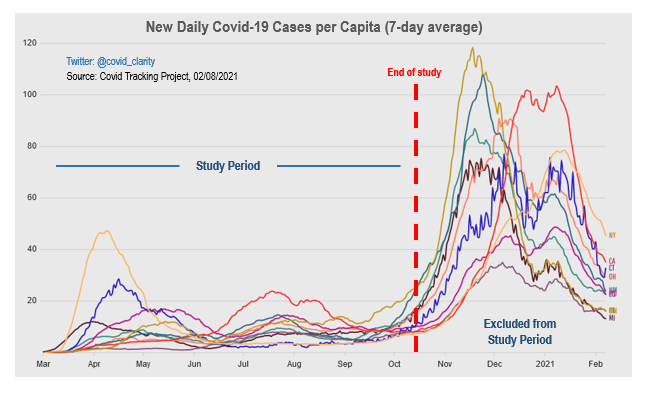
Gee I wonder why they chose to end the study when they did?
There are a few other studies trying to claim face masks help but are also of poor quality. You can see a review of them with links to the studies here.
One of the criticisms of the early response to the pandemic here in the United States was that there was not a unified message and states were left to figure things out for themselves. I would agree with this statement, however, it has provided one benefit. Now that we are a year into this we can compare and contrast how different states have fared using different strategies. Some states issued strong stay at home orders and mask mandates early while others never had mandates.
Since the science is settled it should be pretty easy to see in a few graphs how effectively masks reduced transmission and saved lives.
Let’s start with one of my favorites. This shows hospitalizations in every state for the month of February. States had different policies in place so it should be very easy to tell which states had mask mandates and which didn’t. Let’s play Where’s Masked Waldo! Bet you can’t find him!
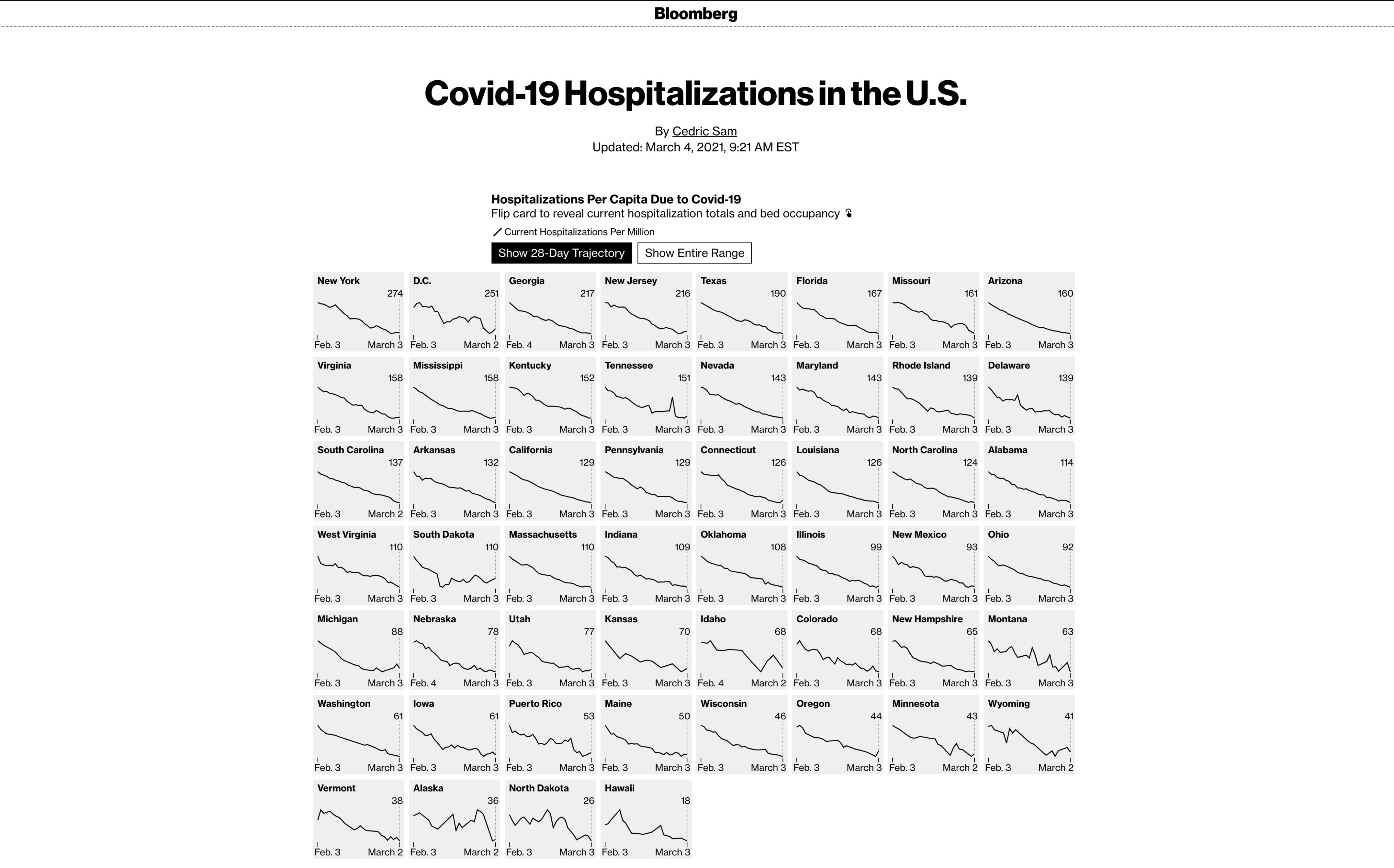
What if we look at a single state. Florida, which has done much better than most states without closing everything, had different policies in different counties.
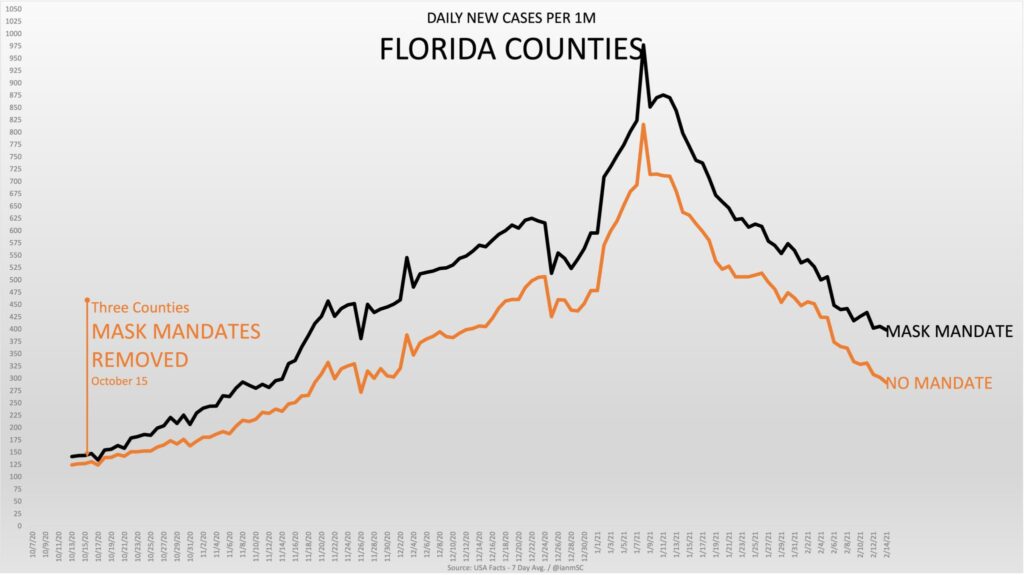
Ok Florida isn’t a good example. It’s warm they have lots of sunshine and Disney. Disney makes everything better.
How about the Midwest? That’s about as far from Florida as you can get in terms of weather and environment.
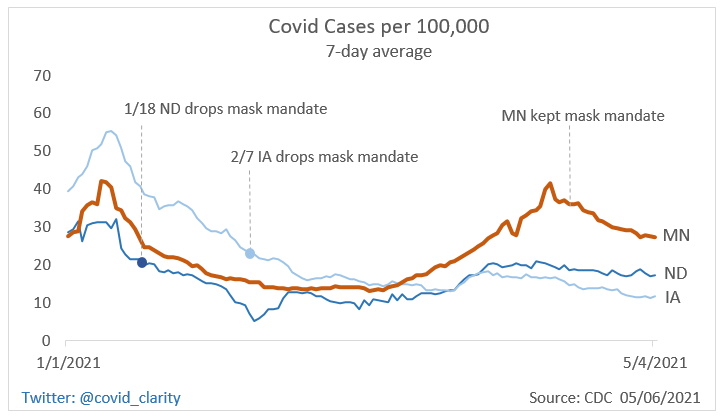
As you can see, cases peaked and dropped the same no matter the mandates.
If you look at the entire United States you can see despite high mask compliance the virus did what viruses do. You can also see politicians don’t always follow the science.
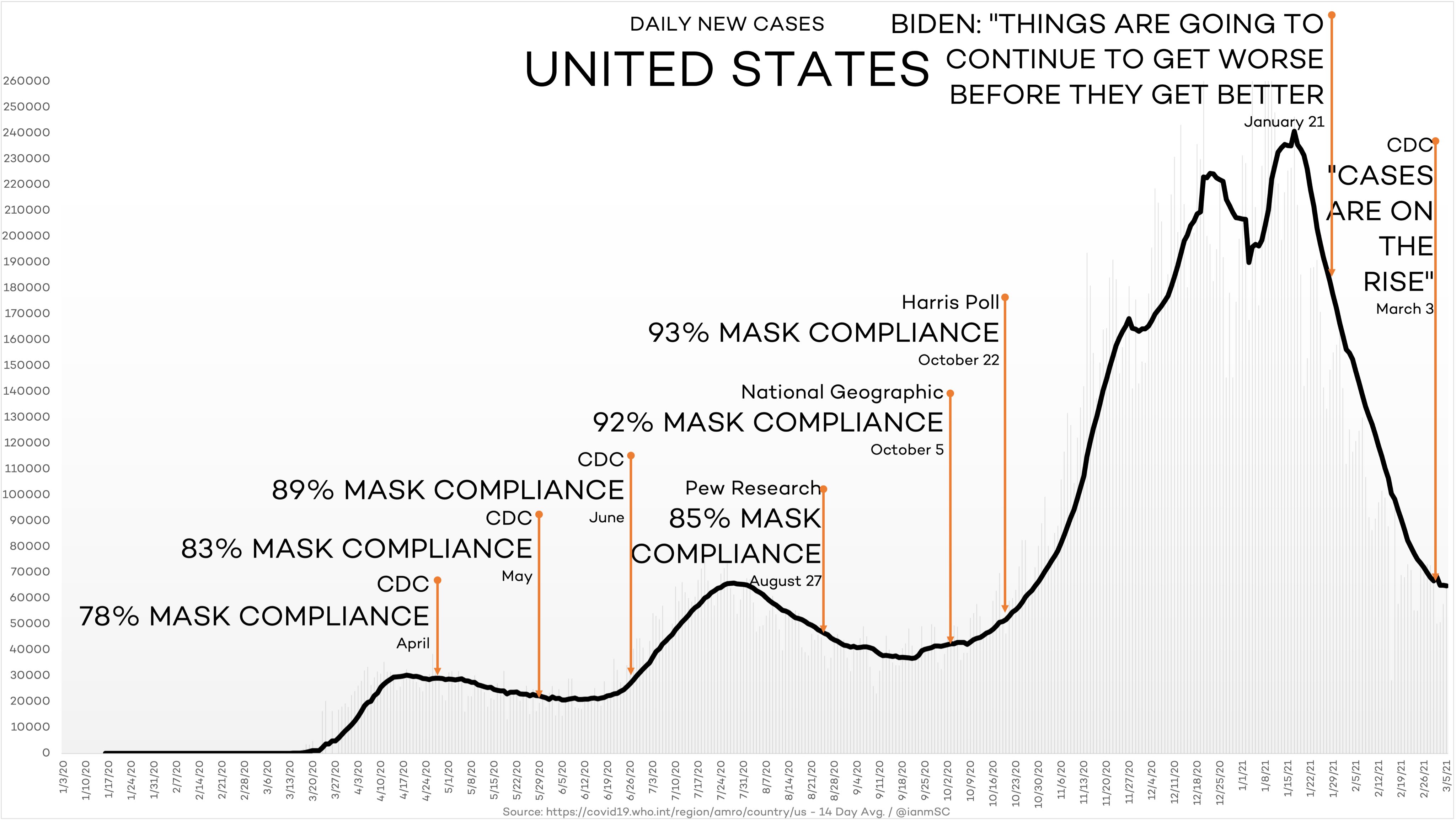
With basic understanding of how humans interact with viruses everyday none of this should come as any surprise. There are many Coronaviruses, the common cold is one. There are also other respiratory viruses like influenza. All of them are seasonal. They peak in the winter when our vitamin d levels are low and we are indoors in close contact more often. Then infections go down in the spring and summer. This Coronavirus behaves no different. Thinking we can somehow control it with a piece of cloth over our mouth is futile.
Especially when you consider most of the time viruses infect us not through breathing them in but from rubbing our eyes and touching our face. Is it possible that you touch your face more often when you are wearing a mask?
So if you think the mask is stopping viruses you may breathe out, think again.
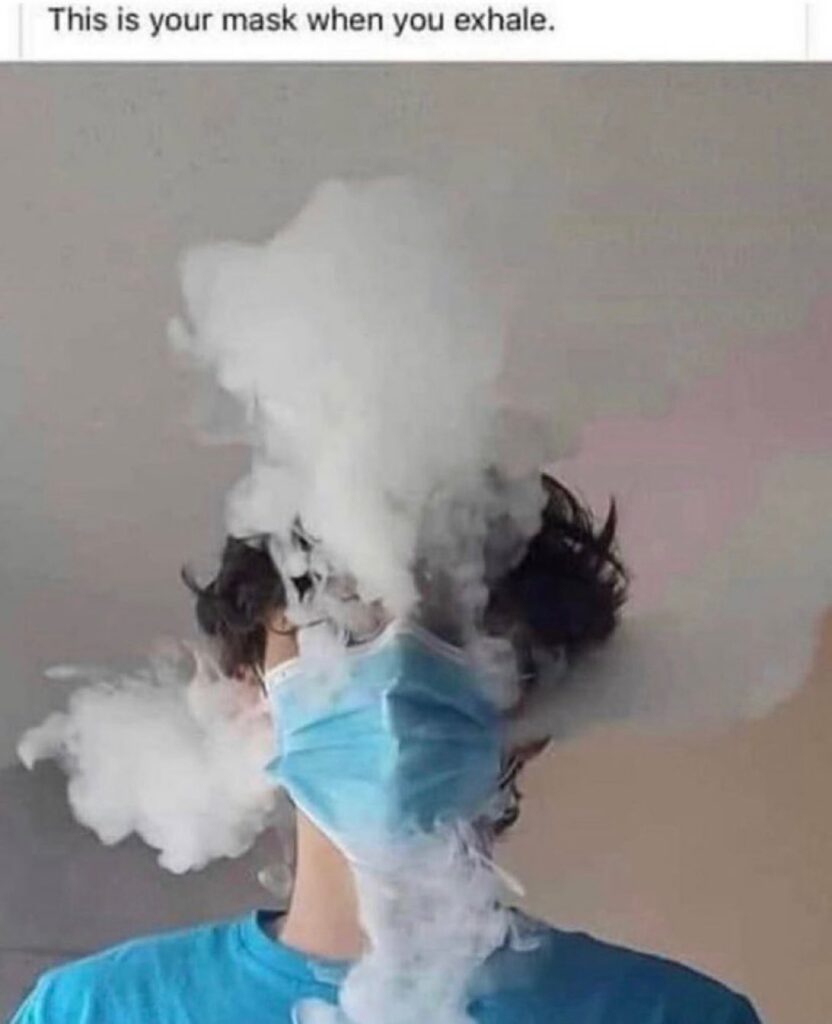
Maybe we just need better masks. Lets look at how Germany, which is the only country to mandate medical N95 masks, compares to Sweden. Who, by the way never had any mask mandate.
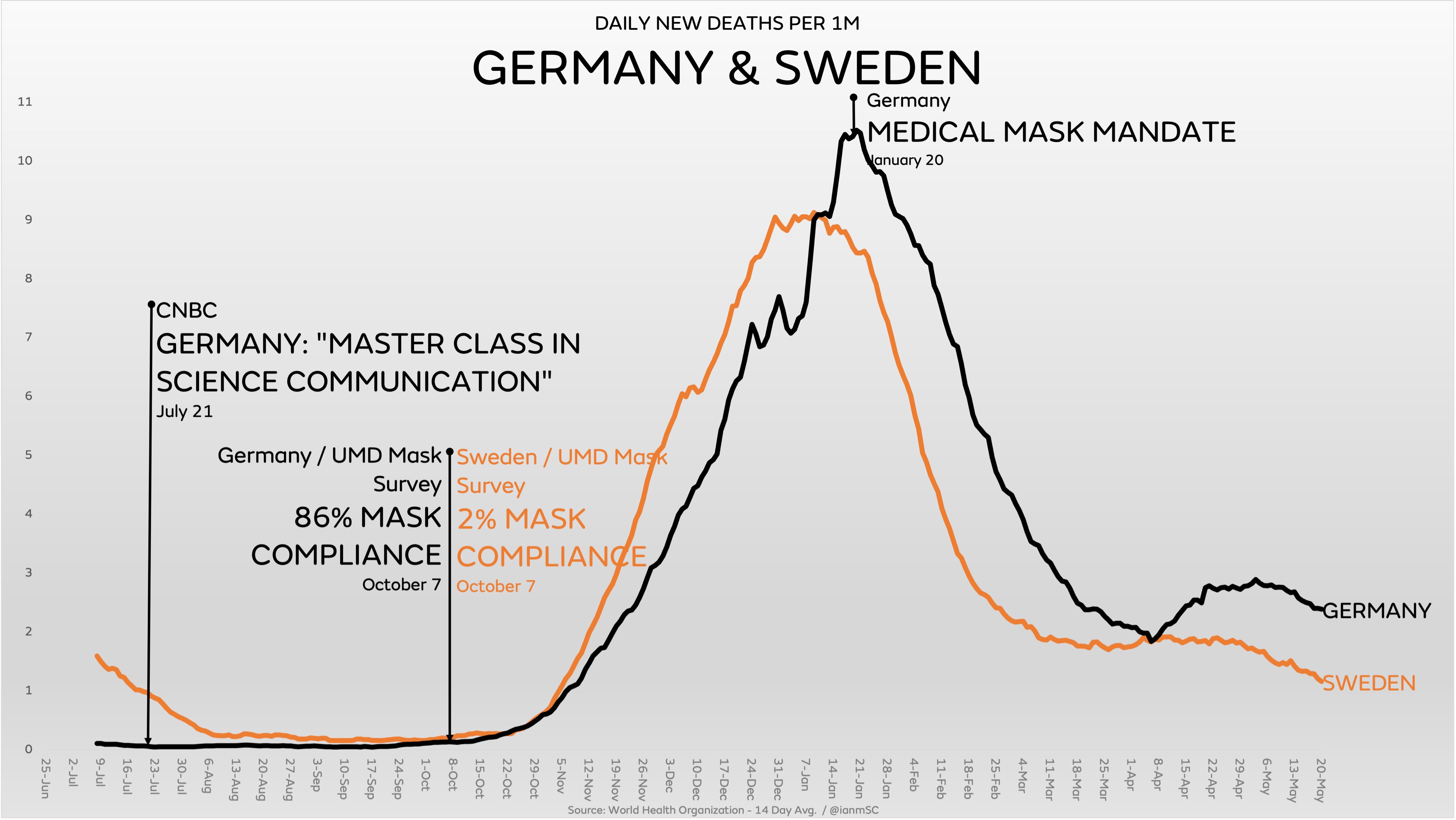
Despite this evidence you may find yourself saying “It’s just a face mask. Wear it to show you are a good person in case it might do something.” That would mean there are no negative effects to wearing one.
Well then let’s look at the settled science to see if that is true.
A randomized control trial (one of the highest levels of evidence, by the way) studied 1,607 people from 14 hospitals. They compared cloth face masks, medical masks and a control group who could do whatever they wanted including no mask in hospital workers. The three groups were followed for 4 weeks and evaluated for three different classifications of disease, clinical respiratory disease, Influenza-like illness and lab confirmed viral infection. This study found that all three types of disease were higher in the cloth mask group. Yes even higher than in the control group. They determined due to moisture retention, improper cleaning, and poor filtration they found cloth masks harmful and did not recommend using them.
There are many studies showing the negative effects of wearing an N95 hospital mask. These are custom fit, and form a tight seal on your face. Studies have shown hypoxemia (decrease in blood oxygen), increase the workload on the metabolic system, hypercapnia (increase in blood carbon dioxide), and may effect thermoregulation. But that doesn’t mean surgical or cloth masks are harmless.
Studies have shown a decrease in oxygen concentration using surgical masks also. Decreases in oxygen concentrations lowers the effectiveness of your immune system to fight infection. It will also increase stress hormones in your body. This puts your system in a chronic fight or flight response. This is a very important response if you are actually in danger but it extremely harmful to live in this state for extended periods of time. Elevated stress hormones weaken your immune system. You know the system designed to protect you from viruses.
Two top German scientists have been studying the potentially hazardous chemicals and microplastics that can be inhaled deep into the lungs when wearing surgical masks for long periods of time. Remember these masks were designed to only be worn for a short time in a sterile hospital setting. They were not designed to be crumbled into a pocket and reused for multiple days. These scientists found hazardous fluorocarbons, formaldehyde and other potentially carcinogenic substances on surgical face masks. They also found tiny microplastics are released from the wear and tear of prolonged use.
Masks made from traditional fabrics normally used for clothing or other purposes aren’t much safer. The standards for those fabrics don’t account for them covering your mouth and nose for extended periods of time and can release harmful chemicals also. They caution that now that we have a much better understanding of the virus we should seriously reconsider mask usage where people are forced to wear them for hours on end, especially children.
If you just want one study to read on the negative effects of wearing a mask this one was just published and is comprehensive. This study is a meta analysis, meaning they combed through the research and found all the published papers on negative effects of wearing a mask. They included 44 quality studies in the paper.
A few of the negative effects found in this paper include, decreases in blood oxygen, increase in blood carbon dioxide, increased heart rate, exhaustion, headache, fatigue, confusion, disorientation, reduced fine motor ability, skin irritations, anxiety, depression, panic attacks, gum inflammation, increase in cavities, feelings of insecurity discouragement and numbness, and a decrease in empathy just to name a few.
Since the only thing we are supposed to care about is a virus and all these other problems are acceptable I will leave this study with my favorite quote from it.
“The warm and humid mask microclimate favors the accumulation of various germs on and underneath the masks, and the germ density is measurably proportional to the length of time the mask is worn. After only 2 h of wearing the mask, the pathogen density increases almost tenfold in experimental observation studies”
If you are thinking “well I’ll just change out my mask more often” please don’t.
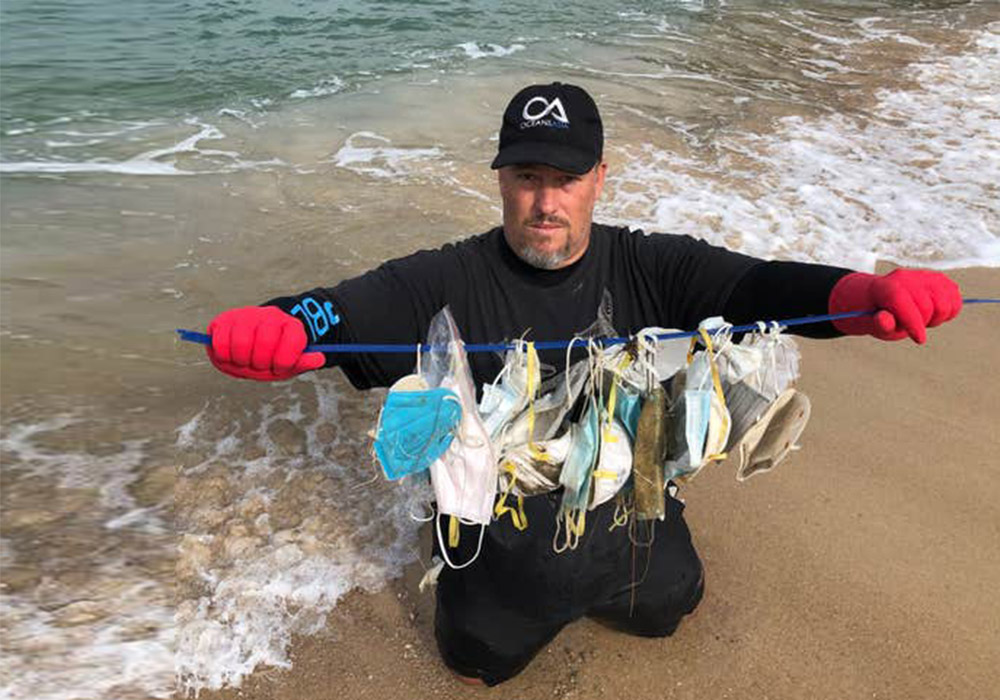
It’s estimated 1.56 billion masks will end up in the ocean this year. One thing the science is settled on is mask waste is a big problem.
Masking of children is going to go down as one of the most awful choices we have made during this whole ordeal. As adults our job is supposed to be to protect them. We know they are at almost zero risk from serious complications from Covid. They also do not regularly transmit it to teachers or staff. In fact the classroom is one of the safest places to be.
They are however suffering due to wearing masks for the entire school day. A German study polled parents to document if their children experienced any negative effects from wearing masks all day in school. Over 20,000 parents responded and 68% reported that their children had ill effects from wearing masks. These included irritability (60%), headache (53%), difficulty concentrating (50%), less happiness (49%), reluctance to go to school/kindergarten (44%), malaise (42%) impaired learning (38%) and drowsiness or fatigue (37%).
Face masks prevent children from reading and mirroring facial expressions. This can be especially difficult for children with learning disabilities. Reading and sharing facial expressions allows a student to have more empathy with other students and teachers. Depriving them of this only increases social stresses.
A journal on plastic surgery even raised concern that face masks would disfigure the ears of children. The constant pressure of the straps behind their ears can deform the cartilage as it is still growing and forming in children.
Children are stressed enough over this pandemic. Depression and anxiety have increased exponentially. Suicidal thoughts and attempts are increasing and being seen in younger and younger age groups. Now this isn’t all from mask usage. School closures and isolation are the main driving factors but why further subject children to the unnecessary stress of wearing a mask all day?
Hopefully reading through this has given you the courage to set your smile free and start returning to normal. Not a new normal, just normal. We need to stop viewing our fellow human beings as nothing more than walking bags of virus and disease.
